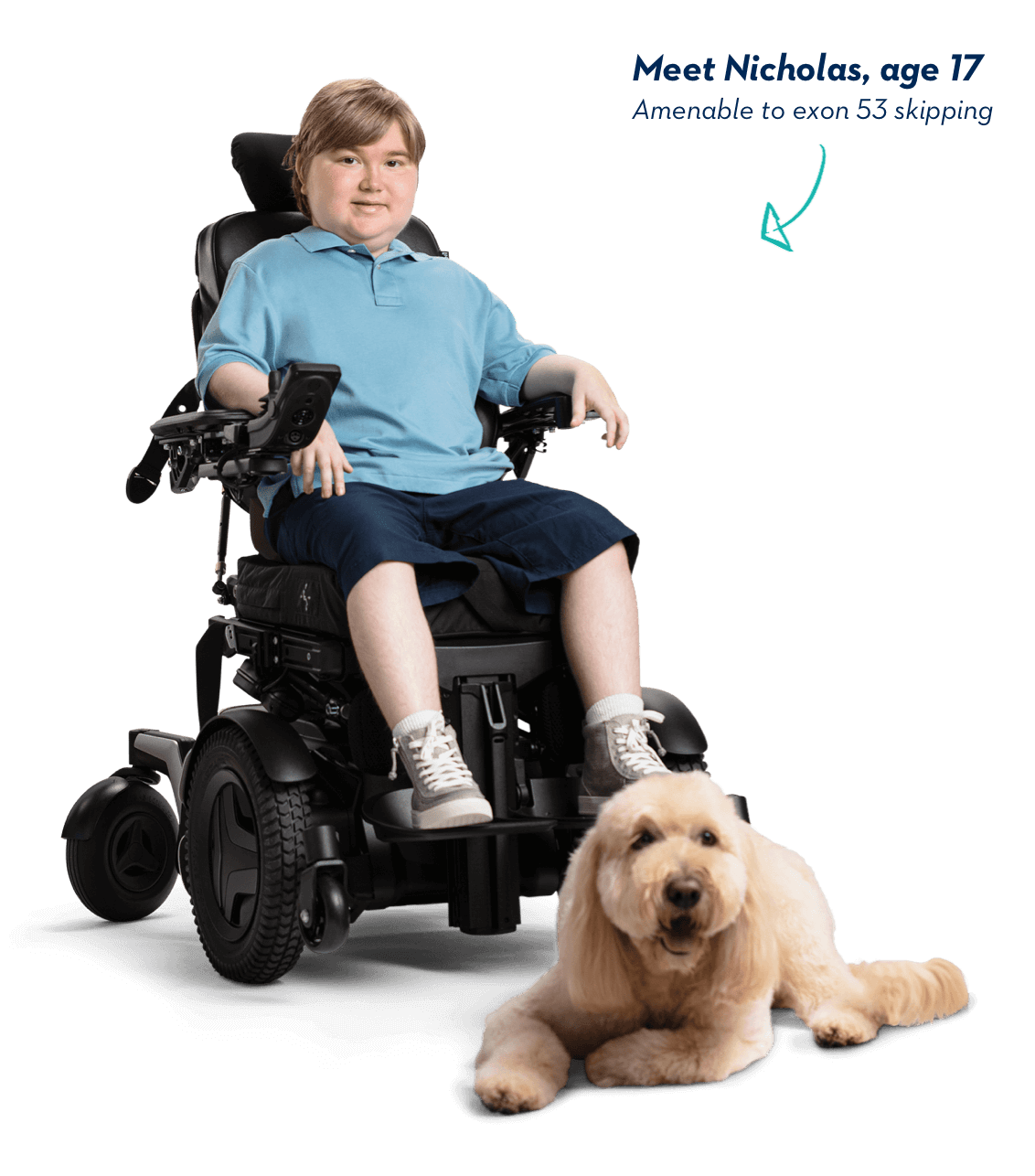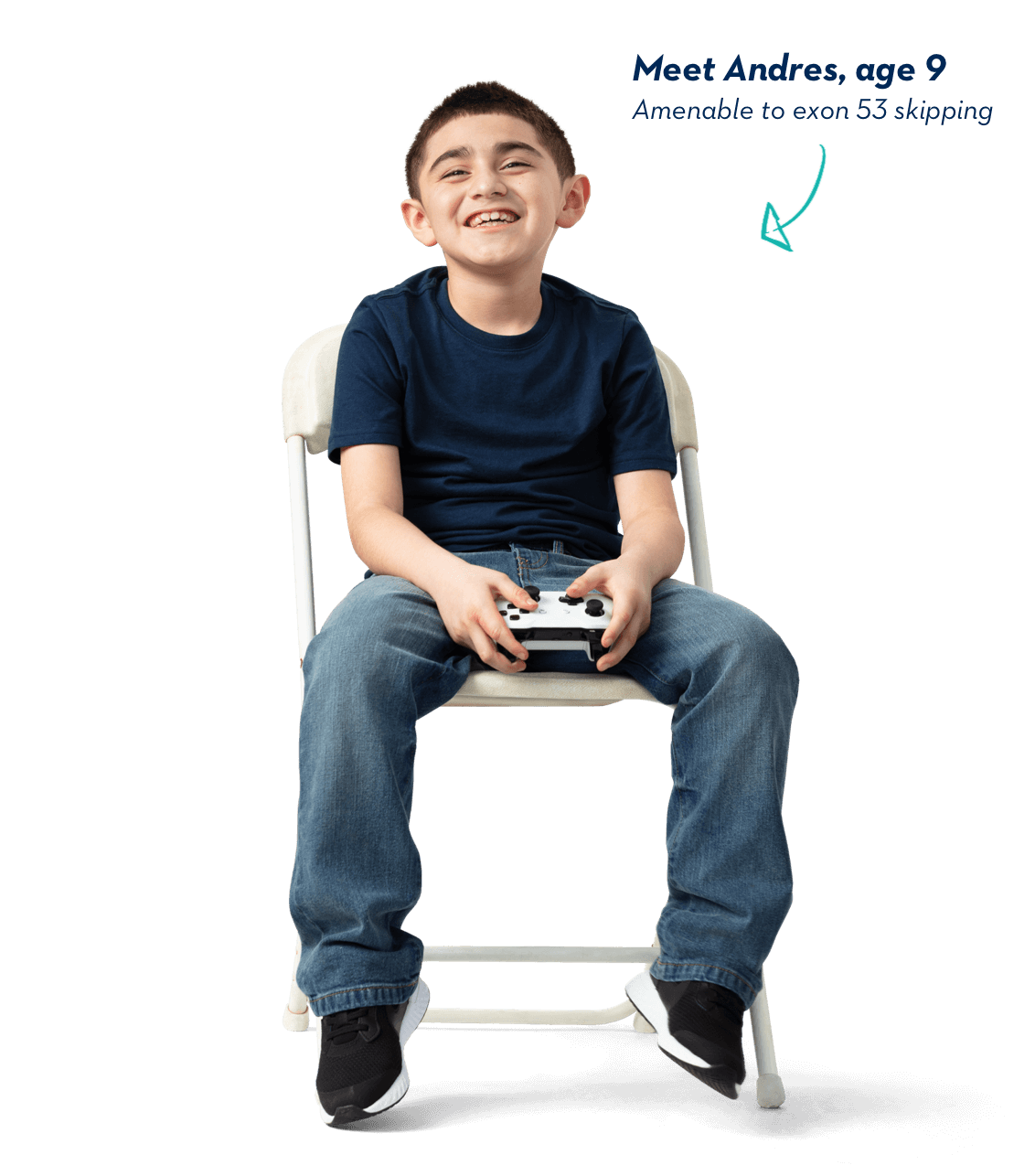Building on hope for Duchenne for those amenable to exon 53 skipping

Meet Elijah, age 8
Amenable to exon 53 skipping

Meet Nicholas, age 17
Amenable to exon 53 skipping

Meet Luke, age 12
Amenable to exon 53 skipping

Meet Andres, age 9
Amenable to exon 53 skipping
VYONDYS 53 is an FDA-approved Duchenne muscular dystrophy treatment for patients who have a confirmed genetic mutation in the dystrophin gene that can be treated by skipping exon 53. In some patients, it helps the body make a shorter form of the dystrophin protein.
Approved under accelerated approval.
Accelerated approval allows for drugs to be approved based on a marker that is considered reasonably likely to predict a clinical benefit. VYONDYS 53 treatment increased the marker, dystrophin, in skeletal muscle in some patients. Verification of a clinical benefit may be needed for VYONDYS 53 to continue to be approved.
Who Can Take It?
Learn the importance of understanding your genetic mutation and what it means to be amenable to treatment with VYONDYS 53
Starting Treatment
Starting treatment with VYONDYS 53? Let us take you through the process so you know what to expect.
Getting Support
With the SareptAssist patient support program, we'll help you navigate the process of starting therapy with VYONDYS 53.
“I’m glad to have “SareptAssist” as a resource for our family.”
Liz, Luke’s mom

